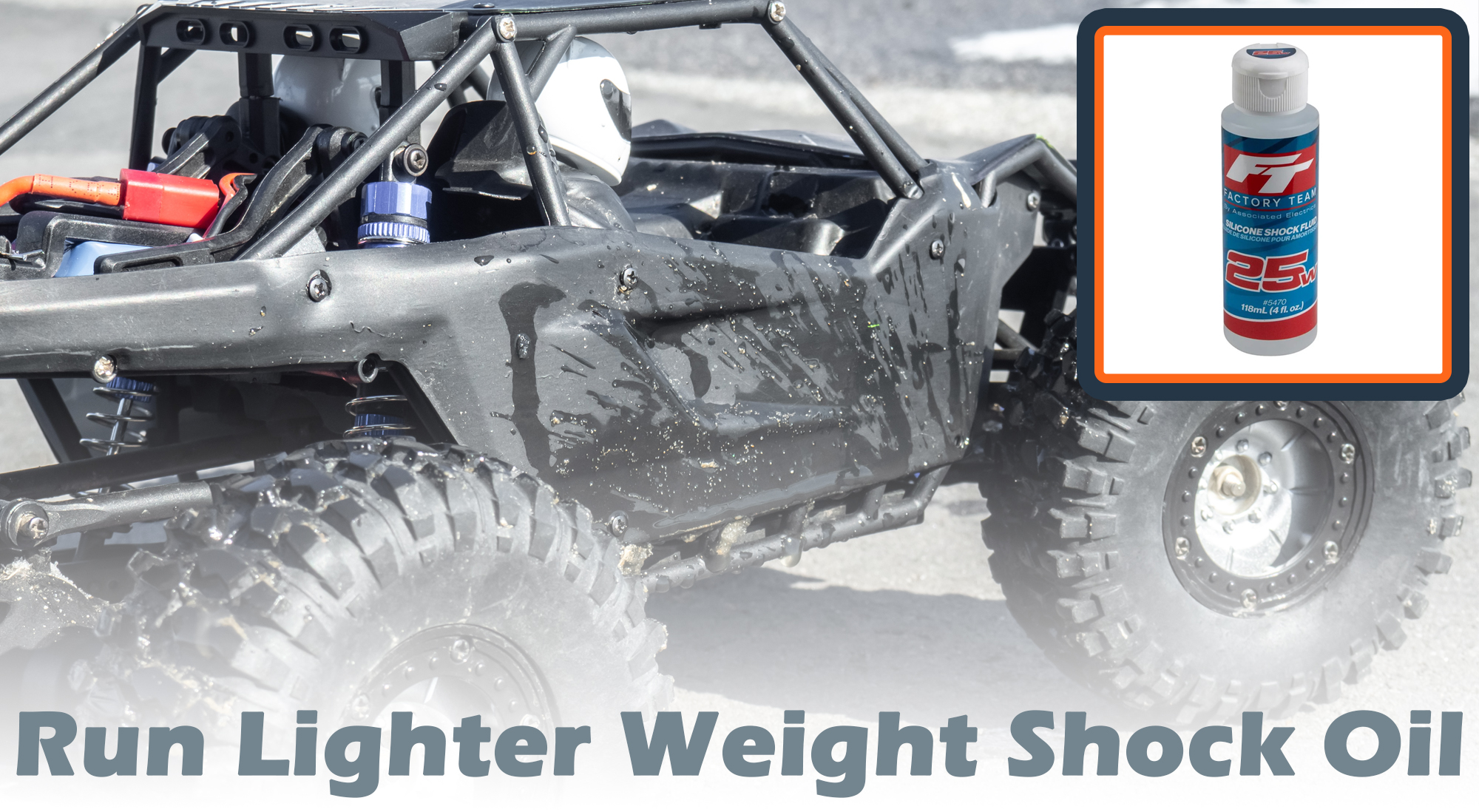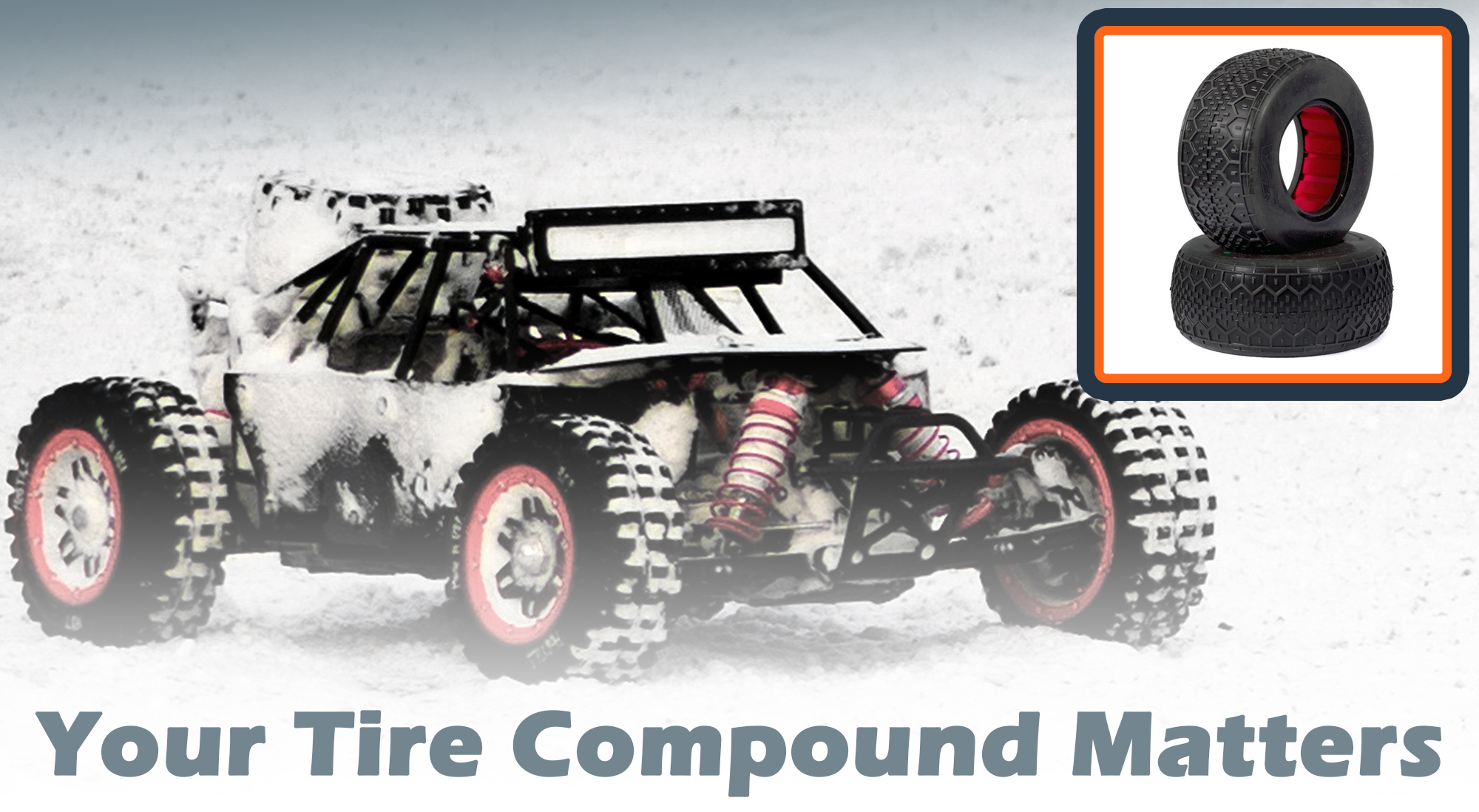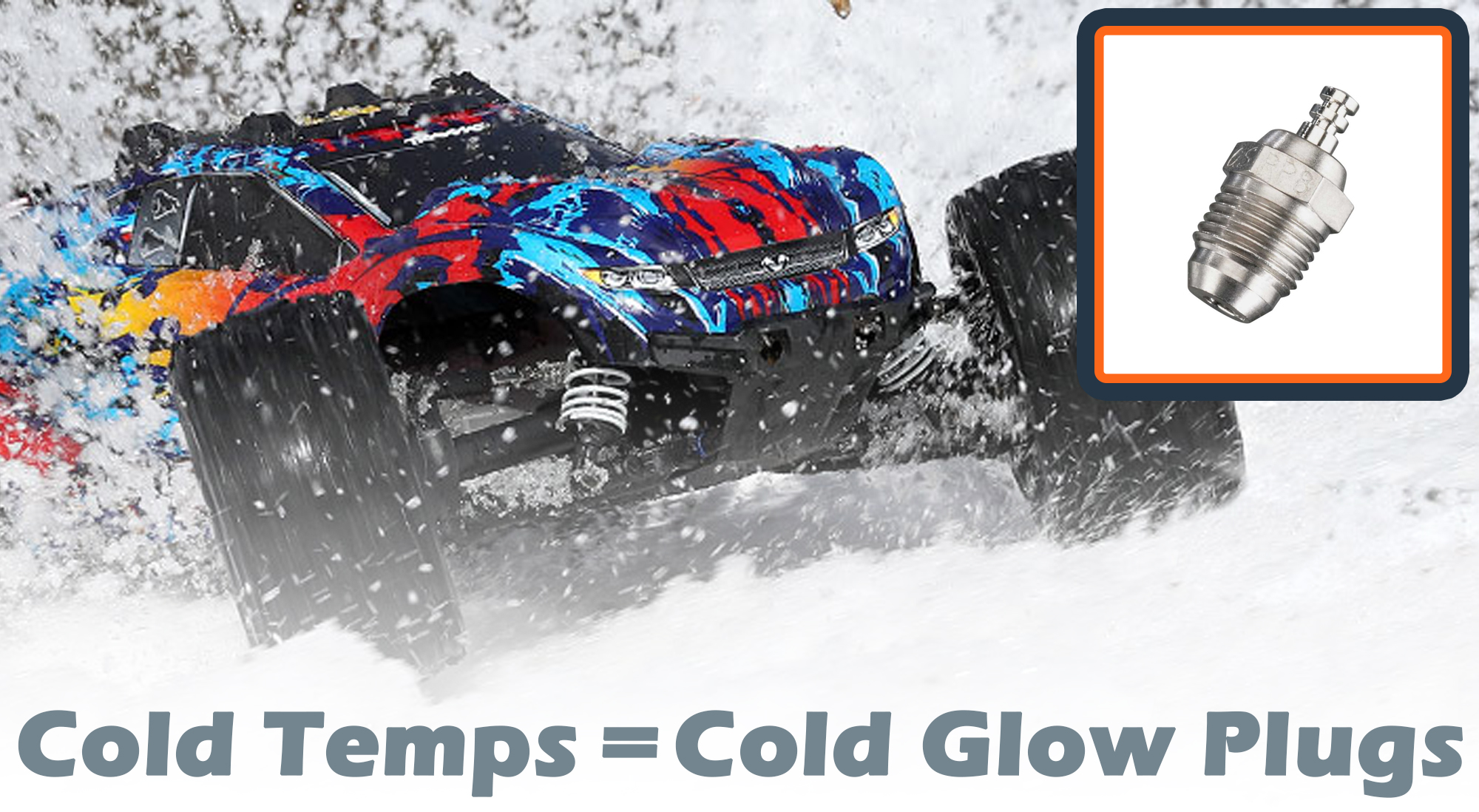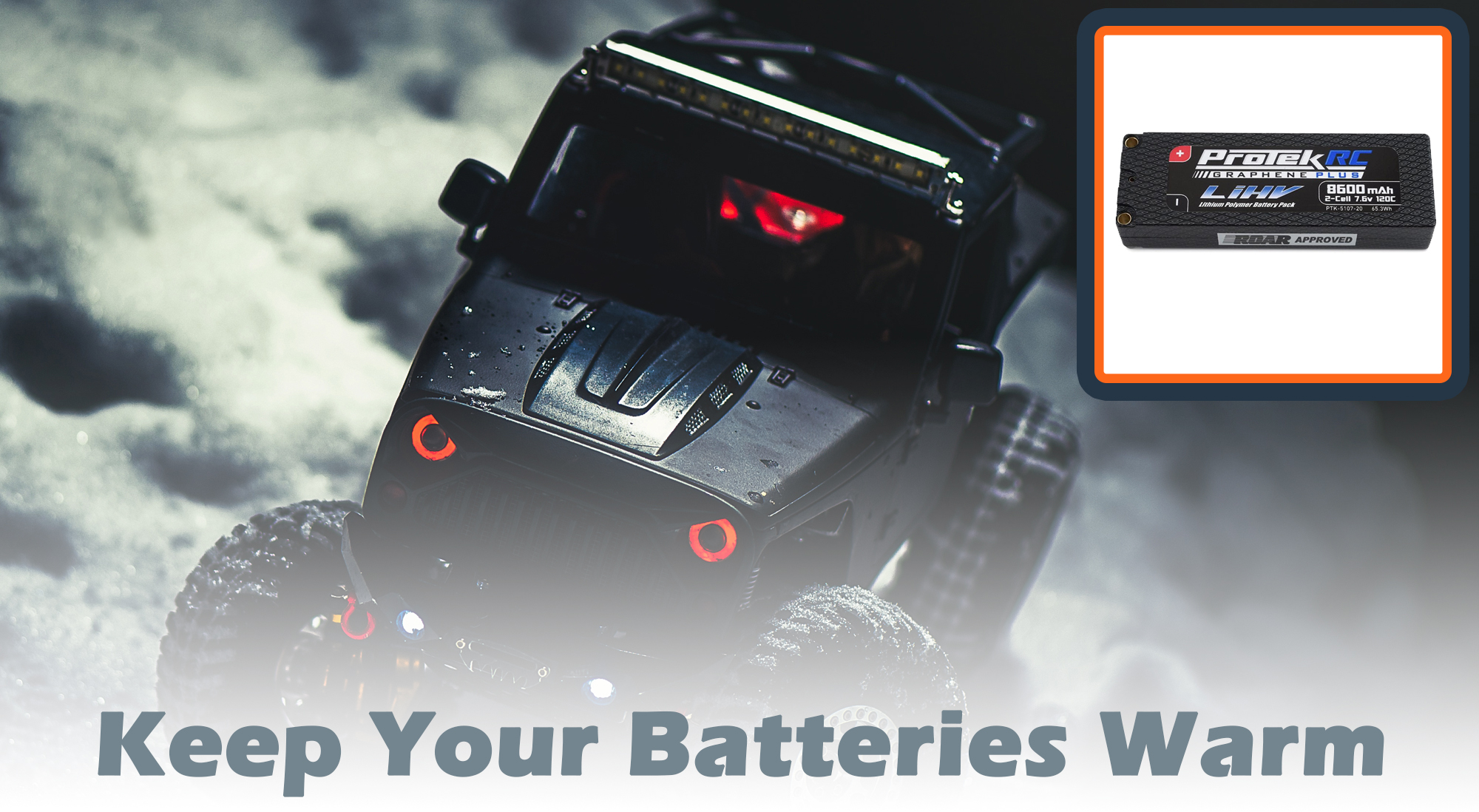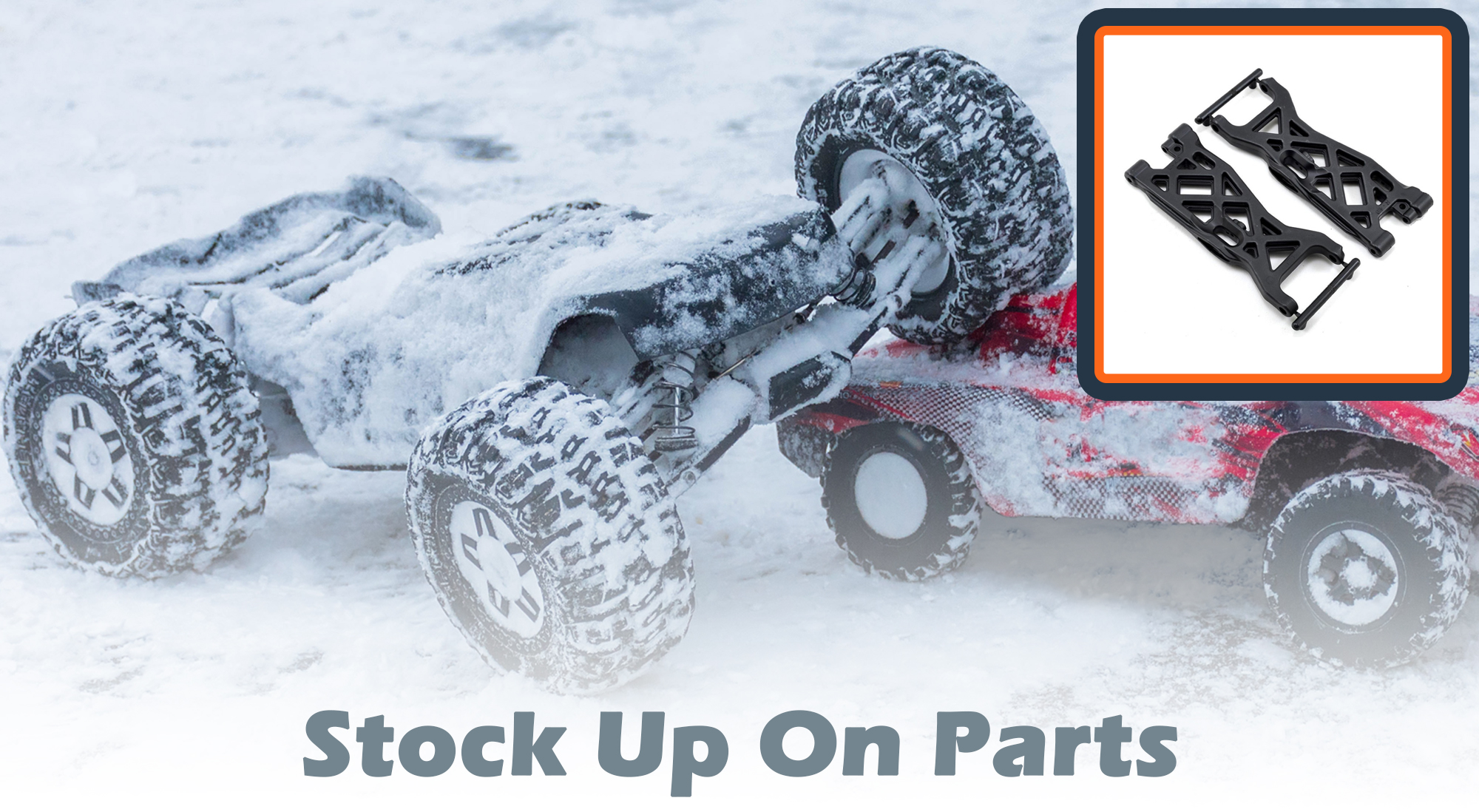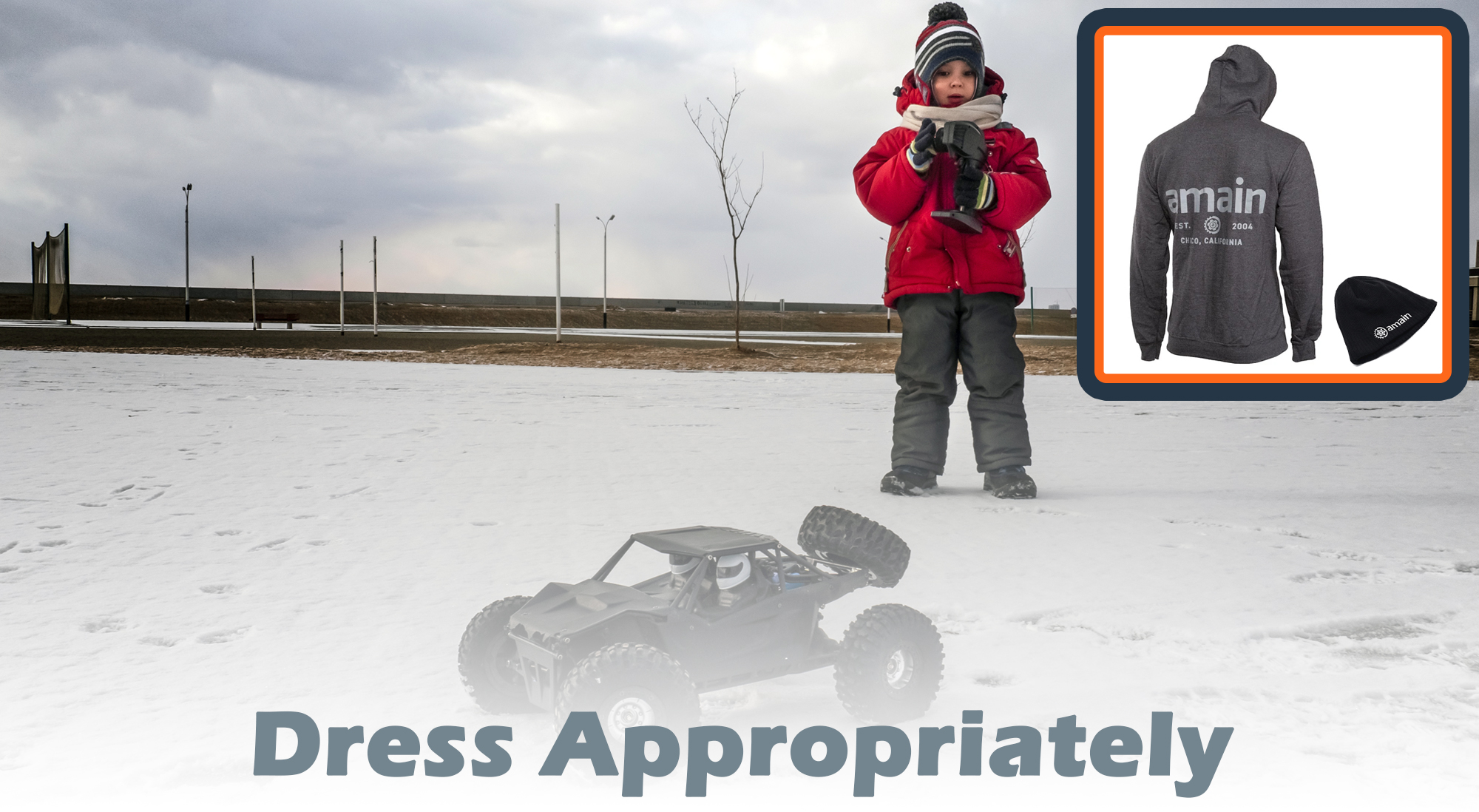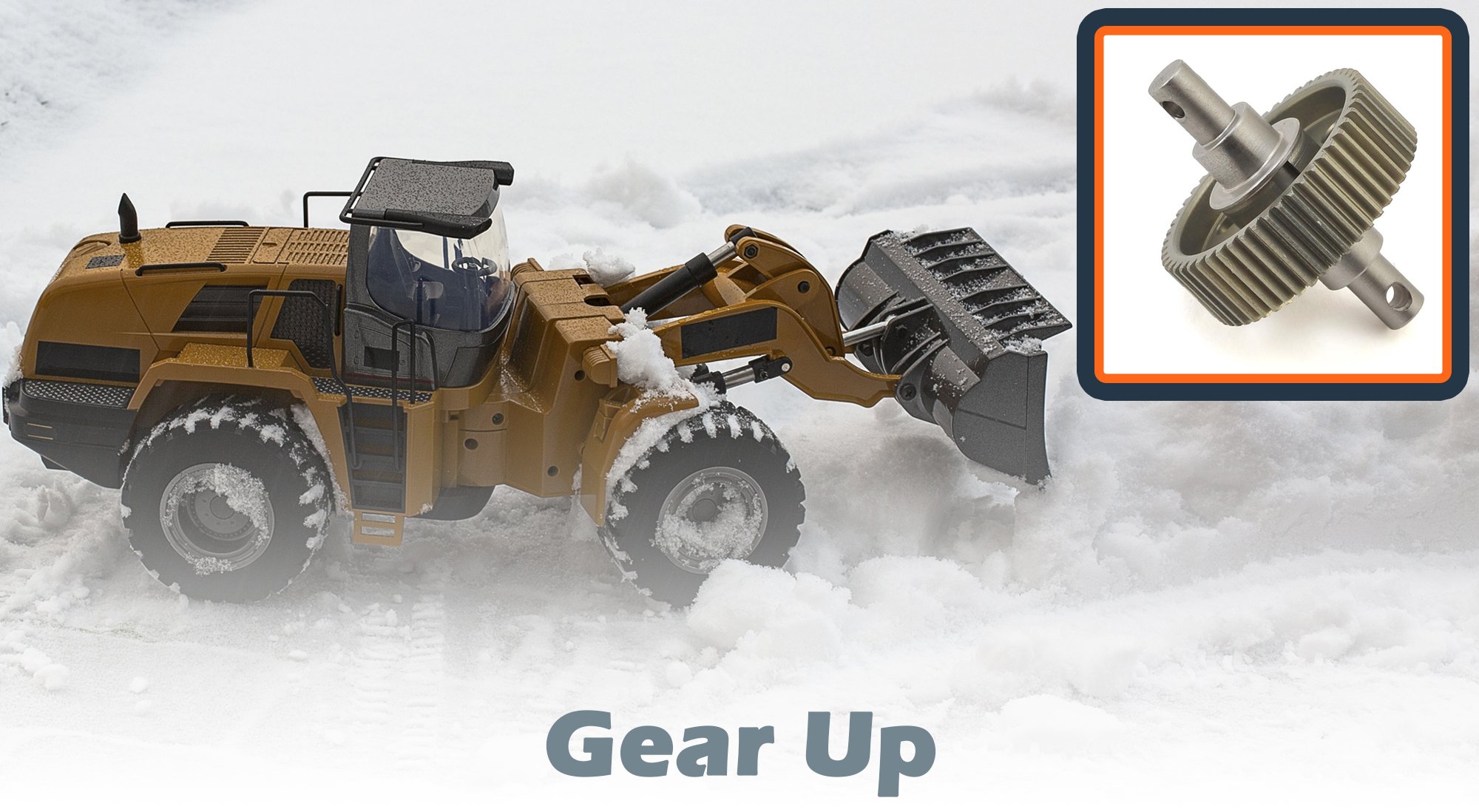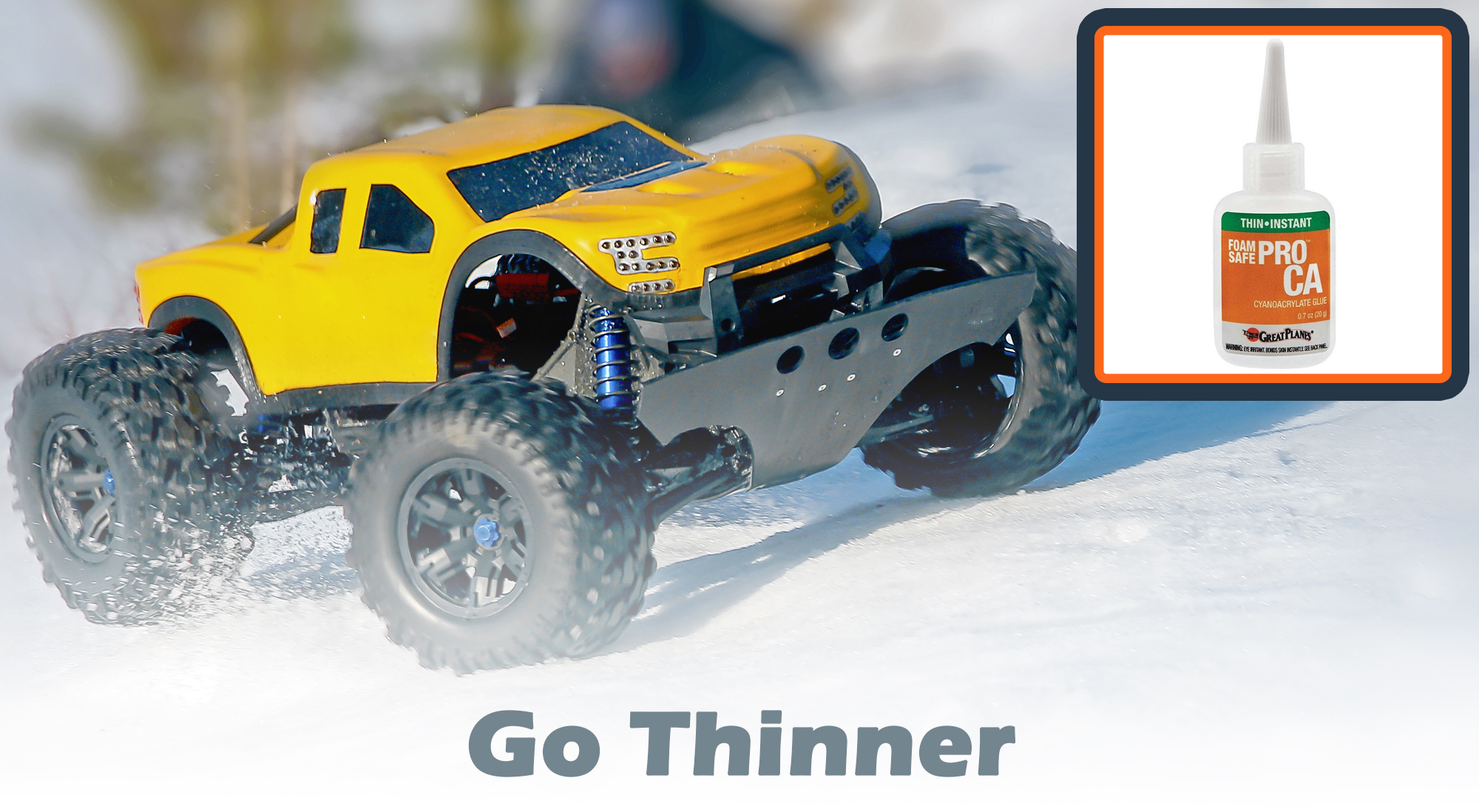Cold Weather RC Tips & What To Do When the Temperatures Drop
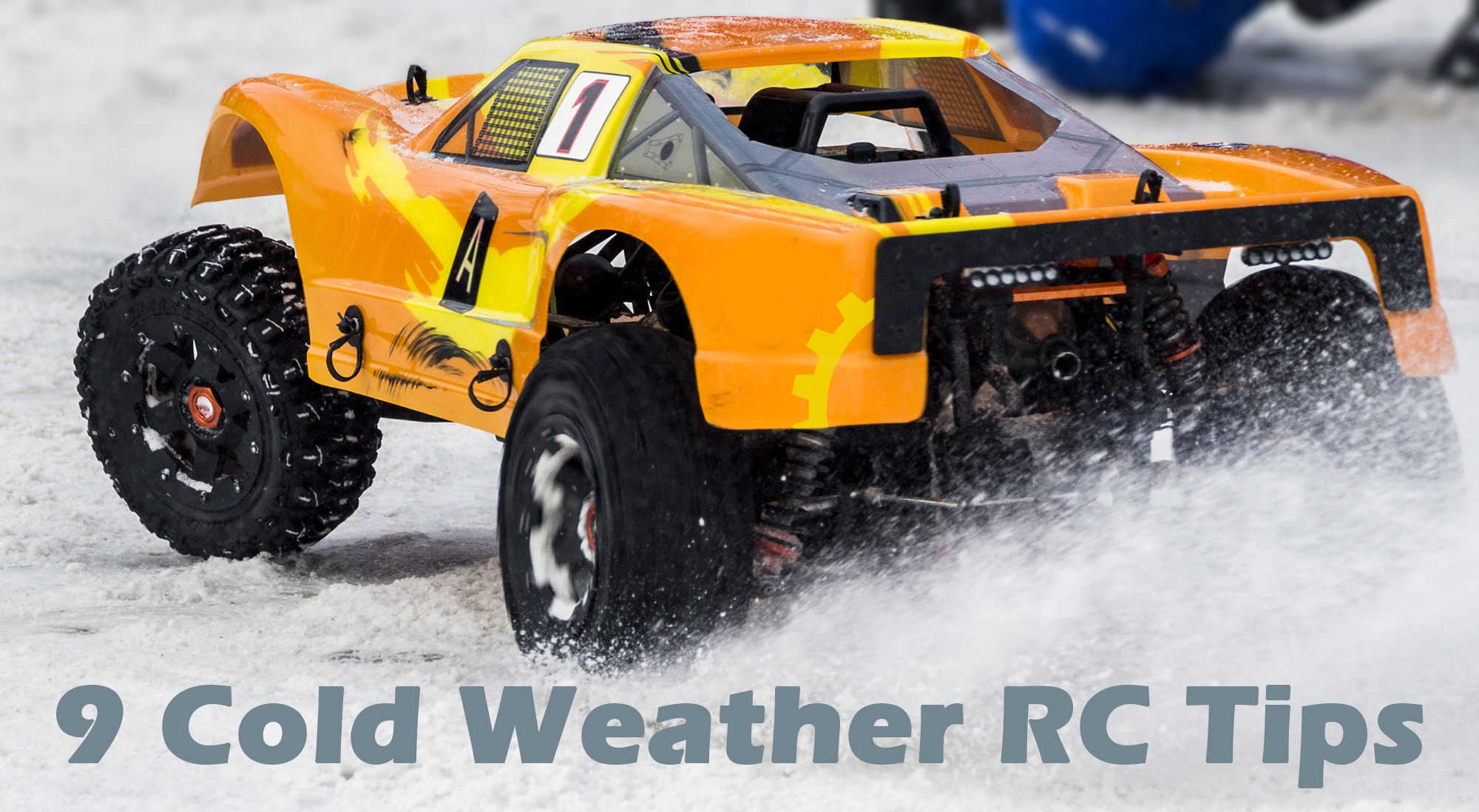
Don't let the cold weather throw you off your game. With cooler temperatures coming, we've put together nine RC tips to keep in mind before heading outside.
Shock Oil - Lighter is Better
When the temperature drops, it’s imperative to run lighter shock oils and springs. Try running lighter 5-weight oil when the ambient temperature has dropped 10-15 degrees Fahrenheit. Your car will handle better and have more traction.
Use Soft Compounds
Softer tire rubber & foam inserts generally work better in cooler conditions for off-road racing. Experiment with softer compounds, and in some cases, soft compounds perform better on clay tracks than clay-specific tires when the temps are low.
Get Extra Cold Plugs
If you notice your nitro vehicle going through glow plugs more in cooler weather, try opting for a colder plug. Cold air is dense and compact; it’s “thicker” and will provide the engine with more power.
Run Higher C-Rated Batteries
LiPo batteries perform better when they are warm. If you’re racing outdoors or in a cold warehouse, keep your batteries in a container and do your best to keep them above 60-degrees Fahrenheit. You’ll notice more punch and increased power when your packs are warm. Buy better packs too! Higher C-rated batteries will perform better than lower C-rated packs in cooler weather.
Keep Spare Parts on Hand
Generally, when it’s colder, you break more parts. Make sure you are stocked up on suspension arms, spindles, and carriers when racing during the winter months. It is not uncommon to crack or snap parts during frigid temps.
Dress For the Weather
I know what you’re thinking, but remember a big part of racing is mental. If you’re cold and uncomfortable at the track, you won’t be having as much fun, nor will you be focused come race time. Grab a beanie, gloves, pocket warmers, and whatever other creature comforts you have to keep you warm when it’s cold.
Increase the Teeth on Your Pinion Gear
One of the benefits of colder weather is running a taller gear ratio. If you’re running in the competitive 17.5 class, you can try running an extra tooth on your pinion gear. The extra horsepower is a nice bonus of cold weather, but make sure you monitor the motor temps.
Thinner CA Glue Works Best
Thinner CA glues generally work better in colder temperatures. If you’re using medium or thick CA tire glue, make sure you glue indoors in much warmer temperatures, about 75-degree Fahrenheit.
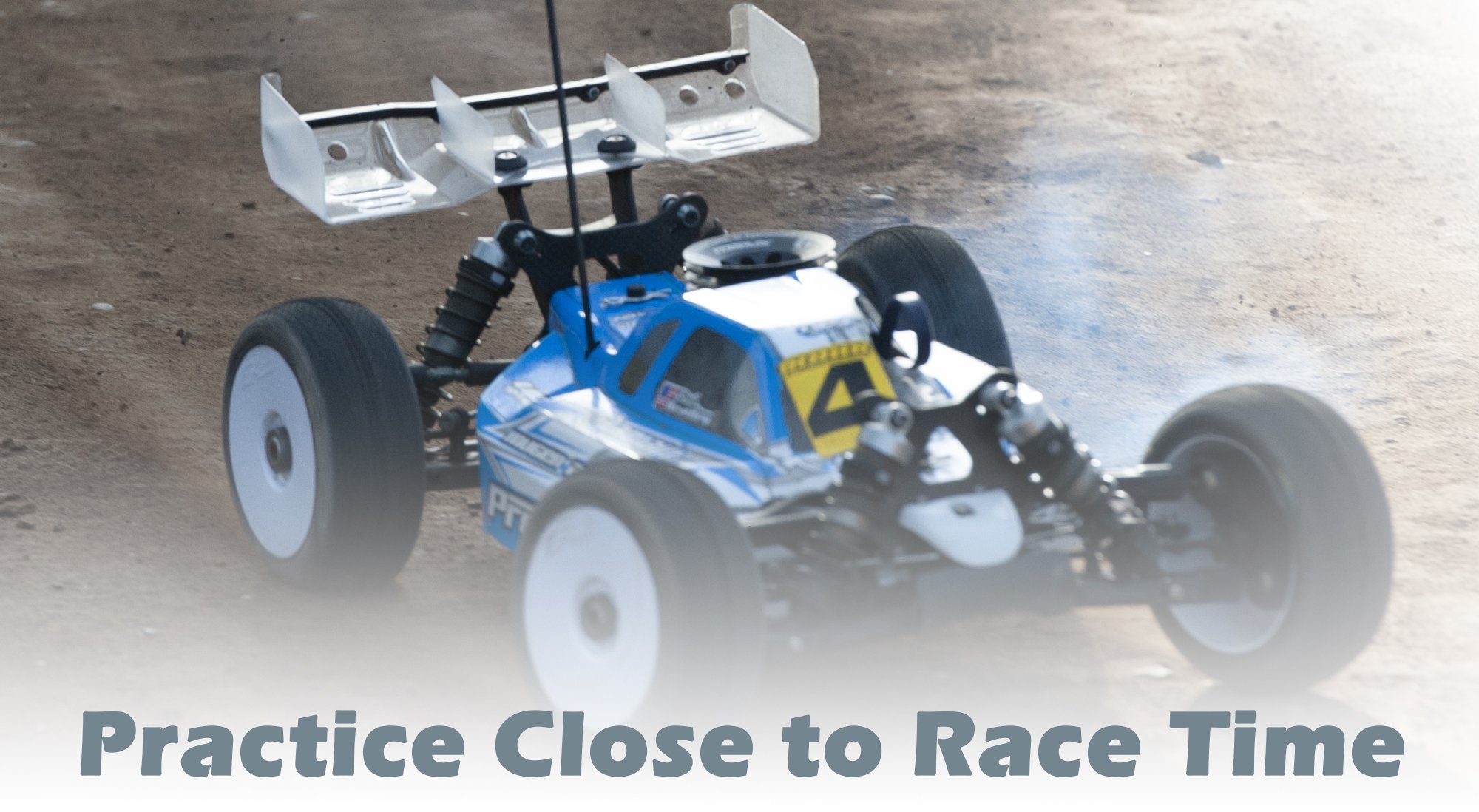
Practice, Practice, Practice!
It’s important to get on the track and run some laps as close to go time as possible. Take extra laps during warm-up too. Why? During the winter, track surfaces change slightly, and you want to be ready for those subtle nuances.

